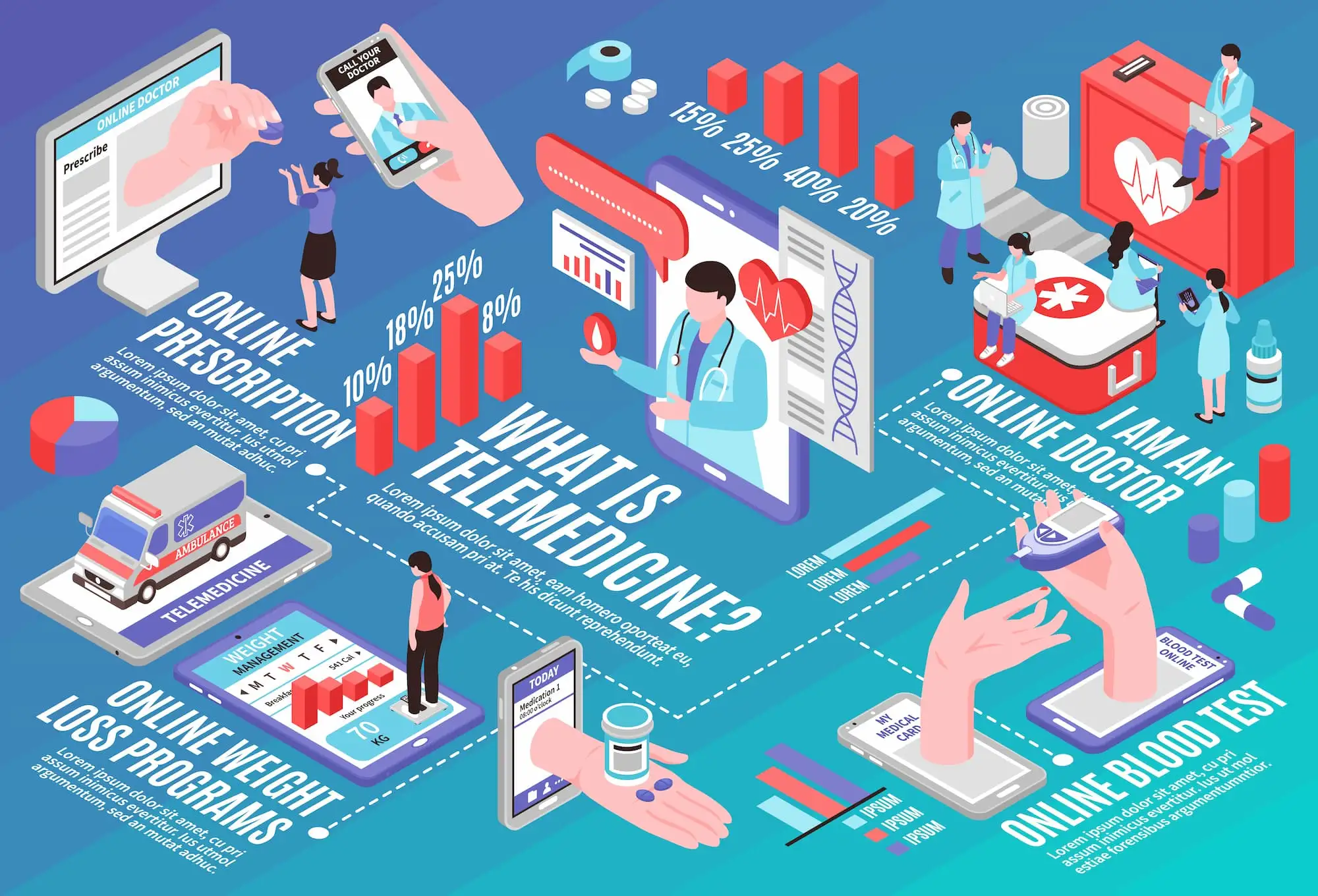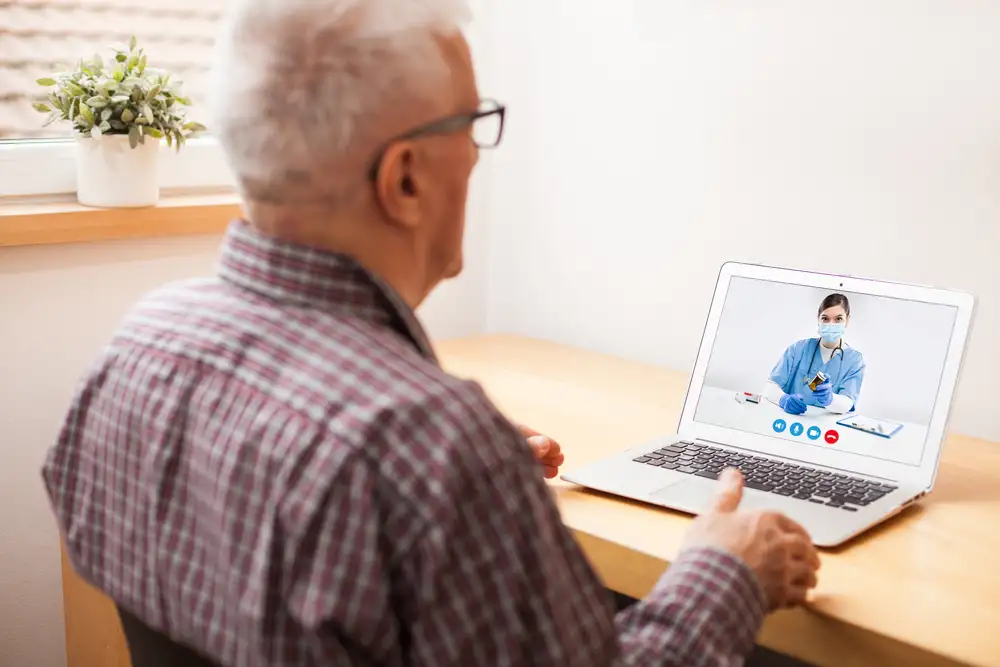Categories
Change Password!
Reset Password!


The information and telecommunication technologies have expanded at a rapid rate during the 20th century which influenced healthcare delivery in several countries. The accessibility of the Internet has created more informed users demanding more healthcare experts. In rural areas, the appropriate care and treatment for patients are hindered due to the lack of trained healthcare experts and healthcare services. [1] The COVID-19 spread has affected healthcare systems and public health across the globe. Both developed and developing countries faced new challenges due to the COVID-19 outbreak. [2]

The social distancing strategy restricted ability of people to physically visit pharmacy stores; decreased staffing and transition of pharmacists to remote work additionally confined patient-pharmacist interactions. [3] Technology has emerged as a promising way to overcome the obstacles to patient care. One such technology is telehealth. [1] During COVID-19 outbreak, there has been an increase in the adoption and embracing of telehealth, including telepharmacy. [4]
The surge in the spread of coronavirus disease expedited the requirement for executing telepharmacy due to quarantine and social distancing requirements. It was soon identified as a tool that could overcome the challenges posed by SARS-CoV-2 outbreak while still offering quality patient care. [3]
Telepharmacy offers remote health care facilities, including health education, monitoring diagnosis, clinical and non-clinical services and many more. Telemedicine services are provided by physicians, while telepharmacy is undertaken by pharmacists. There has been a significant elevation in the services of telepharmacy during the COVID-19 outbreak in the entire world. Stay at home orders and social distancing (non-pharmaceutical strategies) via telecommunication/news media/televisison assisted in the reduction of potential infectious exposures. [4,5]
What is Telepharmacy?
Telepharmacy is defined as the delivery of pharmacy service via telecommunication, skype, zoom or video conferencing to the people who do not have a direct contact with the pharmacy staff. [5] According to “National Association of Boards of Pharmacy”, telepharmacy is defined as “provision of pharmaceutical care through use of telecommunications and information technologies to patients at a distance”. [6]
This technology depicts an innovative and unique method to provide quality pharmacy facilities to particularly regional and rural areas. It facilitates healthcare services like patient counseling, medication review, decision support, and prescription verification by an expert pharmacist for the patients residing at a distance from a remotely located healthcare centre, pharmacy or hospital. [1]

Working of Telepharmacy
The prescriptions enter via pharmacy management system (PMS) in pharmacy. The telepharmacy software amalgamates with pharmacy management systems which permits pharmacy consultants working in the remote-dispensing site to emphasize on filling prescriptions. After the arrival of the prescription at pharmacy, the pharmacy consultants prepare it to be delivered by the pharmacist.
Consultants take images of the tablets, labels, bottles, and prescriptions with the lot number and date of expiration exposed and store the patient’s profile and the images securely in telepharmacy software which is approachable to the pharmacist. The audit log of the prescriptions is saved in system post verification. The patient’s medication profile is reviewed by the pharmacist for the drug interactions and other potential problems prior to the verification of the prescription.
The submission is either approved or rejected after the pharmacist reviewed the images. If the submission is rejected, the pharmacist leaves notes concerning the discrepancy for the consultant and if the submission is approved, the pharmacist notifies the technician and medication are packaged and placed in will-call for the patient. Before dispensing the prescribed medication to a patient, they must talk to the pharmacist through a live video session. [7]
What are the types of telepharmacy?
Inpatient telepharmacy
In inpatient telepharmacy, a pharmacist at an isolated location performs remote order-entry services for an inpatient pharmacy at a hospital and also investigates medication orders prior to drug administration to the patient by hospital's staff. It enables real-time review and verification of medication orders. To aid supplement and strengthen the inpatient pharmacy, remote pharmacists are capable of providing 24/7 coverage in peak hours.
Remote counseling
In remote-patient counseling, the pharmacists provide patient counseling via telecommunications such as a live-and-interactive video session. It authorizes pharmacists to consult and give numerous pharmacy-care services to patients through live video calls. Remote counseling also offers options for significant clinical interactions with pharmacists, discharge counseling, and specialty counseling.
IV admixture
It refers to the formulation of the pharmaceutical product which needs the measured supplement of a medication to a 50 mL or larger bottle of intravenous fluid. With the enforcement of telepharmacy in the IV-admixture cleanroom, the hospital pharmacies can save cost and time. This will enable them to concentrate on other clinical activities and revenue-generating chores.
Remote dispensing
is also known as retail community telepharmacy and is a licensed brick-and-mortar pharmacy that is staffed by certified pharmacy technician. In this, a pharmacist carries out his responsibilities from a remote location via technology, reviews the prescriptions, and monitors the technician. It is utilized in outpatient pharmacy settings and retail community pharmacy.
It reduces the rate of readmission by enhancing patient adherence, aids in the improvement of financial performance, and thus creates a better patient experience. It enables medical care organizations to open retail telepharmacy sites in regions where a traditional pharmacy store is unfeasible. [8]
Role of pharmacists in telepharmacy
Pharmacists play a major role in telepharmacy to deliver pharmacy services as they ensure high-quality care in areas like patient counseling and medication reviews. As the population of patients with severe medical conditions is rising around the globe, the involvement of pharmacists in telepharmacy is also increasing in order to encourage medication compliance and improve monitoring. This, in turn, leads to alleviation of side effects of the drug, tracking and improving medication error rates, and reduction in cost of medications and treatment failure chances.

Telepharmacy models including the major role of pharmacists are successful despite the differences in the medical care system between countries. The other telepharmacy models excluding the involvement of pharmacists lead to no formal drug utilization review or patient counseling. [1]
Clinical benefits of telepharmacy
Telepharmacy offers all the care and services of a traditional pharmacy, helps to minimize human errors and workflow inefficiencies, and can operate in regions where a traditional pharmacy is not financially feasible. [10] It is widely used in pharmacy practice and exhibits a wide variety of other potential benefits that are listed below:
1. Effective patient counseling

Telepharmacy assures higher patient satisfaction regarding the pharmacist counseling and the time required to receive medication. The pharmacists suggest to use webcam-enabled telepharmacy services due to longer counseling duration and better privacy. [1] For example, telepharmacy counseling offered by pharmacists to patients through interactive compressed video was better when compared to education offered through written instructions on an inhaler package insert. [11 ]
2. Addresses issue of minimal scarcity of pharmacists
Several medical centres, hospitals and clinics in rural areas are facing a shortage of local pharmacy facilities where medications are provided without the participation of a pharmacist. Telepharmacy conveniently addresses the lack of pharmacists in rural areas, and enhances patient access to pharmacy services and pharmaceuticals.
Furthermore, it eases troublesome scheduling periods, when pharmacist replacements and relief help might not be easily accessible. Furthermore, it supports staff coverage for vacations, after hours, weekends, and during emergency situation.
3. Economic benefits
Telepharmacy has numerous financial benefits as starting a new pharmacy store is very expensive when compared to costs implicated in the recruitment of pharmacy technicians and equipments for telepharmacy. If telepharmacy did not exist, more than 60% of patients in the low-income population may have faced problems to afford medications. Telepharmacy also saves travelling expenses and time too.
4. Patient satisfaction
In rural areas, accessibility to information and medication via telehealth improves patient satisfaction. One of the major obstacles is the elderly patients missing their appointments as they don't want to go out of their homes. Telepharmacy permits patients to receive their medications without travelling that has elevated satisfaction and trust in the service.
5. Better access to healthcare services
Easy accessbility of healthcare services in remote locations is the major benefit of telepharmacy. [1] Furthermore, during the current COVID-19 crisis, there are many situations where a patient consultation or follow-up is required. However, due to physical distancing or self-isolation needs, it is not feasible to arrange for a face-to-face discussion. This is where a remote or virtual consultation can work wonders for both patient and pharmacist. [12]
With the aid of telepharmacy, pharmacists can offer better pharmaceutical facilities in remote areas that do not have adequate access to healthcare facilities. Telepharmacy also enables access to services like patient counseling, patient education to remote regions, and medication utilization review with the aid of several technologies. [1]
Conclusion
The coronavirus outbreak has presented pharmacists with numerous challenges as well as opportunities to improve and expand their practice. One of these areas is telepharmacy or the provision of improved pharmacy services with the aid of videoconferencing or telephone technology. [12] In this, a pharmacist uses telecommunications technology for overseeing various aspects of pharmacy operations and offering quality patient-care services. [3]
The advances in modern technology enable remote dispensing software to ascertain the highest level of security and safety for technicians, people, and pharmacists. [10] The utilization of virtual care services elevated due to the stay-at-home orders and lockdowns which removed the regulatory obstacles and resulted in an increase in telehealth visits. In the initial stages of the pandemic, telepharmacy obtained a lot of attention as the virtual care services were important for the safety of the patients in their homes. [11]
Telepharmacy will be a milestone to ensure “Health for all” and can be a powerful tool during SARS-CoV-2 outbreak for delivering medical care across health care system. [13] Efforts to use telephone, telehealth, or telepharmacy schemes should be made by the pharmacists who provide the people with medication management services, chronic disease management services and other services that don't need face-to-face meetings. [11]
To continue telepharmacy's use and elevate access to it, the pharmacists require to advocate for more permanent legislation. Pharmacy producers may require to take certain steps to create robust platforms that can be utilized by patients and pharmacies to communicate with each other. Telepharmacy education is important for pharmacists and patients too. [3] The future of telepharmacy looks very bright and has a significant potential to transform delivery of pharmaceutical and healthcare services. [11,14]
References
1. Poudel A, Nissen LM. Telepharmacy: a pharmacist’s perspective on the clinical benefits and challenges. Integrated Pharmacy Research & Practice. 2016;5:75-82.
2. Ibrahim OM, Ibrahim RM, Z Al Meslamani A, Al Mazrouei N. Role of telepharmacy in pharmacist counselling to coronavirus disease 2019 patients and medication dispensing errors. Journal of telemedicine and telecare. 2020 Oct 15:1357633X20964347.
3. Unni EJ, Patel K, Beazer IR, Hung M. Telepharmacy during COVID-19: A Scoping Review. Pharmacy. 2021 Dec;9(4):183.
4. 6 Things to Know About Telepharmacy During COVID-19. Available from: https://blog.cureatr.com/6-things-to-know-about-telepharmacy-during-covid-19 [Last accessed on: 7 March 2022]
5. Telepharmacy: the future of pharmacy in India. Available from: https://www.iimtindia.net/Blog/tele-pharmacy-future-of-pharmacy-in-india/#:~:text=Telepharmacy%20is%20the%20accurate%20delivery,have%20direct%20contact%20with%20pharmacists. [Last accessed on: 7 March 2022]
6. Pallavi Kurra. Telepharmacy: A Benefaction For Rural Healthcare Types of Tele Pharmacy. THE PHARMA REVIEW MARCH - APRIL 2019
7. How Telepharmacy Works: 4 Simple Steps. Available from: https://blog.telepharm.com/how-telepharmacy-works-4-simple-steps#:~:text=A%20telepharmacy%20operates%20like%20a,errors%20than%20traditional%20retail%20pharmacies. [Last accessed on: 8 March 2022]
8. The 4 Different Types of Telepharmacy. Available from: https://blog.telepharm.com/the-4-different-types-of-telepharmacy [Last accessed on: 7 March 2022]
9. Bynum A, Hopkins D, Thomas A, Copeland N, Irwin C. The effect of telepharmacy counseling on metered-dose inhaler technique among adolescents with asthma in rural Arkansas. Telemedicine Journal and e-Health. 2001 Sep 1;7(3):207-17.
10. The 10 Most Frequently Asked Questions About Telepharmacy. Available from:
https://blog.telepharm.com/the-10-most-frequently-asked-questions-about-telepharmacy. [Last accessed on: 11 March 2022]
11. What is Telepharmacy and Why Its Time is Now. Available from:https://blog.cureatr.com/what-is-telepharmacy-and-why-its-time-is-now [Last accessed on: 7 March 2022]
12. Killeen RM, Grindrod K, Ong SW. Innovations in practice: Telepharmacy’s time has arrived. Canadian Pharmacists Journal/Revue des Pharmaciens du Canada. 2020 Sep;153(5):252-5.
13. Ameri A, Salmanizadeh F, Bahaadinbeigy K. Tele-pharmacy: A new opportunity for consultation during the COVID-19 pandemic. Health Policy and Technology. 2020 Sep;9(3):281-2.
14. 4 of the Top Benefits of Telepharmacy. Available from: https://blog.cureatr.com/4-of-the-top-benefits-of-telepharmacy. [Last accessed on: 8 March 2022]
Comments (0)